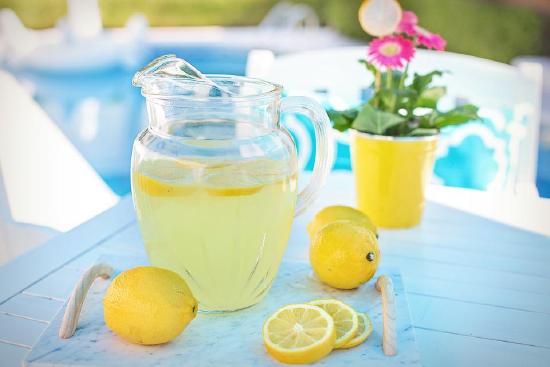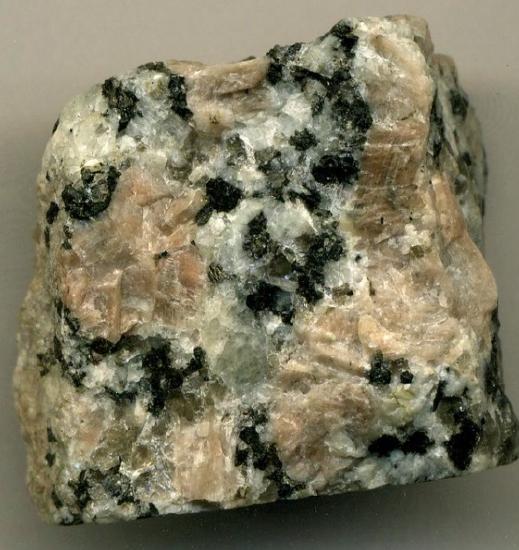2.7: Mixture
- Page ID
- 371006
\( \newcommand{\vecs}[1]{\overset { \scriptstyle \rightharpoonup} {\mathbf{#1}} } \)
\( \newcommand{\vecd}[1]{\overset{-\!-\!\rightharpoonup}{\vphantom{a}\smash {#1}}} \)
\( \newcommand{\dsum}{\displaystyle\sum\limits} \)
\( \newcommand{\dint}{\displaystyle\int\limits} \)
\( \newcommand{\dlim}{\displaystyle\lim\limits} \)
\( \newcommand{\id}{\mathrm{id}}\) \( \newcommand{\Span}{\mathrm{span}}\)
( \newcommand{\kernel}{\mathrm{null}\,}\) \( \newcommand{\range}{\mathrm{range}\,}\)
\( \newcommand{\RealPart}{\mathrm{Re}}\) \( \newcommand{\ImaginaryPart}{\mathrm{Im}}\)
\( \newcommand{\Argument}{\mathrm{Arg}}\) \( \newcommand{\norm}[1]{\| #1 \|}\)
\( \newcommand{\inner}[2]{\langle #1, #2 \rangle}\)
\( \newcommand{\Span}{\mathrm{span}}\)
\( \newcommand{\id}{\mathrm{id}}\)
\( \newcommand{\Span}{\mathrm{span}}\)
\( \newcommand{\kernel}{\mathrm{null}\,}\)
\( \newcommand{\range}{\mathrm{range}\,}\)
\( \newcommand{\RealPart}{\mathrm{Re}}\)
\( \newcommand{\ImaginaryPart}{\mathrm{Im}}\)
\( \newcommand{\Argument}{\mathrm{Arg}}\)
\( \newcommand{\norm}[1]{\| #1 \|}\)
\( \newcommand{\inner}[2]{\langle #1, #2 \rangle}\)
\( \newcommand{\Span}{\mathrm{span}}\) \( \newcommand{\AA}{\unicode[.8,0]{x212B}}\)
\( \newcommand{\vectorA}[1]{\vec{#1}} % arrow\)
\( \newcommand{\vectorAt}[1]{\vec{\text{#1}}} % arrow\)
\( \newcommand{\vectorB}[1]{\overset { \scriptstyle \rightharpoonup} {\mathbf{#1}} } \)
\( \newcommand{\vectorC}[1]{\textbf{#1}} \)
\( \newcommand{\vectorD}[1]{\overrightarrow{#1}} \)
\( \newcommand{\vectorDt}[1]{\overrightarrow{\text{#1}}} \)
\( \newcommand{\vectE}[1]{\overset{-\!-\!\rightharpoonup}{\vphantom{a}\smash{\mathbf {#1}}}} \)
\( \newcommand{\vecs}[1]{\overset { \scriptstyle \rightharpoonup} {\mathbf{#1}} } \)
\( \newcommand{\vecd}[1]{\overset{-\!-\!\rightharpoonup}{\vphantom{a}\smash {#1}}} \)
\(\newcommand{\avec}{\mathbf a}\) \(\newcommand{\bvec}{\mathbf b}\) \(\newcommand{\cvec}{\mathbf c}\) \(\newcommand{\dvec}{\mathbf d}\) \(\newcommand{\dtil}{\widetilde{\mathbf d}}\) \(\newcommand{\evec}{\mathbf e}\) \(\newcommand{\fvec}{\mathbf f}\) \(\newcommand{\nvec}{\mathbf n}\) \(\newcommand{\pvec}{\mathbf p}\) \(\newcommand{\qvec}{\mathbf q}\) \(\newcommand{\svec}{\mathbf s}\) \(\newcommand{\tvec}{\mathbf t}\) \(\newcommand{\uvec}{\mathbf u}\) \(\newcommand{\vvec}{\mathbf v}\) \(\newcommand{\wvec}{\mathbf w}\) \(\newcommand{\xvec}{\mathbf x}\) \(\newcommand{\yvec}{\mathbf y}\) \(\newcommand{\zvec}{\mathbf z}\) \(\newcommand{\rvec}{\mathbf r}\) \(\newcommand{\mvec}{\mathbf m}\) \(\newcommand{\zerovec}{\mathbf 0}\) \(\newcommand{\onevec}{\mathbf 1}\) \(\newcommand{\real}{\mathbb R}\) \(\newcommand{\twovec}[2]{\left[\begin{array}{r}#1 \\ #2 \end{array}\right]}\) \(\newcommand{\ctwovec}[2]{\left[\begin{array}{c}#1 \\ #2 \end{array}\right]}\) \(\newcommand{\threevec}[3]{\left[\begin{array}{r}#1 \\ #2 \\ #3 \end{array}\right]}\) \(\newcommand{\cthreevec}[3]{\left[\begin{array}{c}#1 \\ #2 \\ #3 \end{array}\right]}\) \(\newcommand{\fourvec}[4]{\left[\begin{array}{r}#1 \\ #2 \\ #3 \\ #4 \end{array}\right]}\) \(\newcommand{\cfourvec}[4]{\left[\begin{array}{c}#1 \\ #2 \\ #3 \\ #4 \end{array}\right]}\) \(\newcommand{\fivevec}[5]{\left[\begin{array}{r}#1 \\ #2 \\ #3 \\ #4 \\ #5 \\ \end{array}\right]}\) \(\newcommand{\cfivevec}[5]{\left[\begin{array}{c}#1 \\ #2 \\ #3 \\ #4 \\ #5 \\ \end{array}\right]}\) \(\newcommand{\mattwo}[4]{\left[\begin{array}{rr}#1 \amp #2 \\ #3 \amp #4 \\ \end{array}\right]}\) \(\newcommand{\laspan}[1]{\text{Span}\{#1\}}\) \(\newcommand{\bcal}{\cal B}\) \(\newcommand{\ccal}{\cal C}\) \(\newcommand{\scal}{\cal S}\) \(\newcommand{\wcal}{\cal W}\) \(\newcommand{\ecal}{\cal E}\) \(\newcommand{\coords}[2]{\left\{#1\right\}_{#2}}\) \(\newcommand{\gray}[1]{\color{gray}{#1}}\) \(\newcommand{\lgray}[1]{\color{lightgray}{#1}}\) \(\newcommand{\rank}{\operatorname{rank}}\) \(\newcommand{\row}{\text{Row}}\) \(\newcommand{\col}{\text{Col}}\) \(\renewcommand{\row}{\text{Row}}\) \(\newcommand{\nul}{\text{Nul}}\) \(\newcommand{\var}{\text{Var}}\) \(\newcommand{\corr}{\text{corr}}\) \(\newcommand{\len}[1]{\left|#1\right|}\) \(\newcommand{\bbar}{\overline{\bvec}}\) \(\newcommand{\bhat}{\widehat{\bvec}}\) \(\newcommand{\bperp}{\bvec^\perp}\) \(\newcommand{\xhat}{\widehat{\xvec}}\) \(\newcommand{\vhat}{\widehat{\vvec}}\) \(\newcommand{\uhat}{\widehat{\uvec}}\) \(\newcommand{\what}{\widehat{\wvec}}\) \(\newcommand{\Sighat}{\widehat{\Sigma}}\) \(\newcommand{\lt}{<}\) \(\newcommand{\gt}{>}\) \(\newcommand{\amp}{&}\) \(\definecolor{fillinmathshade}{gray}{0.9}\)Ahhhh! A tall glass of ice-cold lemonade is really refreshing on a hot day. Lemonade is a combination of lemon juice, water, and sugar. Do you know what kind of matter lemonade is? It’s obviously not an element because it consists of more than one substance. Is it a compound? Not all combined substances are compounds. Some—including lemonade—are mixtures.

What Is a Mixture?
A mixture is a combination of two or more substances in any proportion. This is different from a compound, which consists of substances in fixed proportions. The substances in a mixture also do not combine chemically to form a new substance, as they do in a compound. Instead, they just intermingle and keep their original properties. The lemonade pictured above is a mixture because it doesn’t have fixed proportions of ingredients. It could have more or less lemon juice, for example, or more or less sugar, and it would still be lemonade.
What are some other examples of mixtures?
Solution
Other examples of liquid mixtures include salt water and salad dressing. Air is a mixture of gases, mainly nitrogen and oxygen. The rock pictured in the figure below is a solid mixture.

Homogeneous or Heterogeneous?
The lemonade in the opening picture is an example of a homogeneous mixture. A homogeneous mixture has the same composition throughout. Another example of a homogeneous mixture is salt water. If you analyzed samples of ocean water in different places, you would find that the proportion of salt in each sample is the same: 3.5 percent.
The rock in figure above is an example of a heterogeneous mixture. A heterogeneous mixture varies in its composition. The black nuggets, for example, are not distributed evenly throughout the rock.
Types of Mixtures
Mixtures have different properties depending on the size of their particles. Three types of mixtures based on particle size are solutions, suspensions, and colloids, all of which are described in the table below.
Table \(\PageIndex{1}\): Solutions, Suspensions, and Colloids
| Type of Mixture | Description |
|---|---|
|
Solutions |
A solution is a homogeneous mixture with tiny particles. The particles are too small to see and also too small to settle or be filtered out of the mixture. When the salt is thoroughly mixed into the water in this glass, it will form a solution. The salt will no longer be visible in the water, and it won’t settle to the bottom of the glass. |
|
Colloids |
A colloid is a homogeneous mixture with medium-sized particles. The particles are large enough to see but not large enough to settle or be filtered out of the mixture. The gelatin in this dish is a colloid. It looks red because you can see the red gelatin particles in the mixture. However, the particles are too small to settle to the bottom of the dish. |
|
Suspensions |
A suspension is a heterogeneous mixture with large particles. The particles are large enough to see and also to settle or be filtered out of the mixture. The salad dressing in this bottle is a suspension. It contains oil, vinegar, herbs, and spices. If the bottle sits undisturbed for very long, the mixture will separate into its component parts. That’s why you should shake it before you use it. |
If you buy a can of paint at a paint store, a store employee may put the can on a shaker machine to mix up the paint in the can. What type of mixture is the paint?
Solution
The paint is a suspension. Some of the components of the paint settle out of the mixture when it sits undisturbed for a long time. This explains why you need to shake (or stir) the paint before you use it.
The milk you buy in the supermarket has gone through a process called homogenization. This process breaks up the cream in the milk into smaller particles. As a result, the cream doesn’t separate out of the milk no matter how long it sits on the shelf. Which type of mixture is homogenized milk?
Solution
Homogenized milk is a colloid. The particles in the milk are large enough to see—that’s why milk is white instead of clear like water, which is the main component of milk. However, the particles are not large enough to settle out of the mixture.
Separating Mixtures
The components of a mixture keep their own identity when they combine, so they retain their physical properties. Examples of physical properties include boiling point, ability to dissolve, and particle size. When components of mixtures vary in physical properties such as these, processes such as boiling, dissolving, or filtering can be used to separate them.
Look at the figure below of the Great Salt Lake in Utah. The water in the lake is a solution of salt and water. Do you see the white salt deposits near the shore? How did the salt separate from the salt water? Water has a lower boiling point than salt, and it evaporates in the heat of the sun. With its higher boiling point, the salt doesn’t get hot enough to evaporate, so it is left behind.
Suppose you have a mixture of salt and pepper. What properties of the salt and pepper might allow you to separate them?
Solution
Salt dissolves in water but pepper does not. If you mix salt and pepper with water, only the salt will dissolve, leaving the pepper floating in the water. You can separate the pepper from the water by pouring the mixture through a filter, such as a coffee filter.
After you separate the pepper from the salt water, how could you separate the salt from the water?
Solution
You could heat the water until it boils and evaporates. The salt would be left behind.
Summary
- A mixture is a combination of two or more substances in any proportions. The substances in a mixture do not combine chemically, so they retain their physical properties.
- A homogeneous mixture has the same composition throughout. A heterogeneous mixture varies in its composition.
- Mixtures can be classified on the basis of particle size into three different types: solutions, suspensions, and colloids.
- The components of a mixture retain their own physical properties. These properties can be used to separate the components by filtering, boiling, or other physical processes.
Review
- What is a mixture?
- What is the difference between a homogeneous and a heterogeneous mixture?
- Make a table to compare and contrast solutions, colloids, and suspensions. Include an example of each type of mixture in your table.
- Iron filings are attracted by a magnet. This is a physical property of iron but not of most other materials, including sand. How could you use this difference in physical properties to separate a mixture of iron filings and sand?

